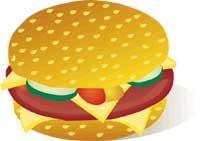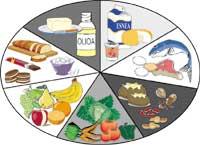Energy raw materials composed of carbon, hydrogen and oxygen: carbohydrates
1996/11/01 Lorenzo, Arantza | Uranga, Ane Miren Iturria: Elhuyar aldizkaria
If in the previous one we affirm that water is the heart of food, on this occasion carbohydrates, in addition to being the most abundant ingredients in nature, are the most abundant energy source of the body. Although these are structured with carbon, hydrogen and oxygen atoms, due to their quantity and type of binding, different carbohydrates are formed.
To classify them from the food point of view, we will make two groups: the useful ones, that is, the ones that our body can use to extract energy and those that are not. The structure of the latter makes the body unable to draw energy from them, so it only uses them to clean the body. We will talk about them next time.

Among the available we must distinguish two other subgroups: the basic ones, the so-called sugars in the common language and the complex carbohydrates.
The basic ones are glucose, fructose, galactose, sucrose (common sugar), etc. Its general characteristics are the same: sweet, soluble in water and easily absorbable in the intestine.
Take advantage of the bodies as you get them from food without just transformations. As a result, blood glucose levels (glycemia) increase as soon as you eat. They are rich in carbohydrates sweet foods (biscuits, jam, sweet quince, chocolate, candy…) and fruits.
The complexes, although they are formed along the chain of the basic ones, are not sweet and in the lisericas the enzymes must be broken in order to absorb. The absorption is usually much slower, so the glycemia rises little by little. The main sources are potatoes, rice, legumes, cereals, bread and pasta.
Finally, if you want to follow a balanced diet, you have to get between 50 and 60% of the energy you need every day, from carbohydrates, but in the following proportion: 10% of the basic and the rest, 40-50% of the complex.
Hazelnuts L
- Food imbalances: anorexia and bulimiaThe aesthetic models imposed by today's society cause real headaches for young children. The desire to introduce themselves to these strict measures generates many diseases. In the Basque Autonomous Community, for example, between 700 and 800 cases of anorexia are known among girls aged 14 to 18. The concern that has raised the enormous extent of the problem has led to the start of campaigns to prevent the disease in schools in various territories of developed countries, including ours.
- A research carried out in the United Kingdom, sponsored by vitamin E, arteriosclerosis, explains that a high intake of vitamin E produces the oxidation of low-density lipoproteins, which reduces the arteriosclerosis that suffer from the arteries. However, it has been shown that it does not affect other more serious heart diseases.

Gai honi buruzko eduki gehiago
Elhuyarrek garatutako teknologia





